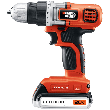If you're like most baby boomers or from earlier generations, when you think of office or overhead lighting, you envision fluorescent bulbs, and when you think of home lighting, you think of the familiar incandescent light bulbs. But the next time you purchase light bulbs for your lamps, take a look at the LED lights that are offered for home use. The main difference between incandescent and LED lamps is the filament versus the electronic chip used to generate the beam of light. That is, the incandescent bulb uses a filament, and LED lights use a light-emitting diode (thus, the initials L.E.D.).
LED lighting is part of a type of lighting referred to as solid-state lighting (SSL), which incorporates the use of solid-state electroluminescence, rather than thermal radiation to emit light. Because it doesn't use thermal radiation to emit light, SSL generates light while creating very little heat.
In my own household, we're slowly making the switch from incandescent bulbs to LED lighting. We started with nightlight in the hallway that uses a LED lamp. Since it is such a bright white/blue lamp, we painted the bulb with red fingernail polish and it tones down the bright white quite a bit. Here are some points to consider if you're contemplating using LED lighting in and around your home:
Use LEDs if you're concerned about helping the environment, because they are extremely eco-friendly. LEDs use a fraction of the energy of traditional lighting, and lend themselves well to a variety of uses, including solar lighting and other renewable energy sources. LEDs use lower wattage than incandescent bulbs, translating into energy and money savings for the consumer.

MAX Power! A powerful lithium-ion drill/driver that delivers 0-to-650 RPM and 115 inches-per-pound of torque in a lightweight, easy-to-use package. An anti-slip soft grip and LED worklight makes this tool a delight to use. Check out Black & Decker 20-Volt Cordless Drill/Driver today!
There is more to insulating your home than throwing up some random insulation that you get from the local home ...
Discover MoreUnderstanding caulks and foams is an important step if you are going to choose the best one. After all, these items are ...
Discover MoreFor many homeowners, their energy bills are typically the costliest of their ongoing monthly expenses. The first step to ...
Discover MoreThere are currently no comments for this tip. (Be the first to leave your comment—just use the simple form above!)
Copyright © 2026 Sharon Parq Associates, Inc.
Comments